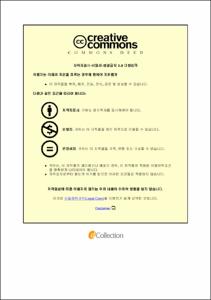한중시간부사대조연구
- Alternative Title
- A comparative study of time adverbs in Korean and Chinese
- Abstract
- 본 논문에서 선정된 한국어 시간부사와 중국어 시간부사의 특징을 고찰하여 대조함으로 시간 부사에 표현에 있어서 담당하는 역할을 비교하였다. 양국 간 시간부사의 의미를 잘 이해하고 중국어의 시간부사와 한국어의 시간부사의 공통점과 차이점을 정확하게 파악하여 한국어를 배우는 중국인 학습자들에게 큰 도움을 되는 것을 목적으로 하였다.
제Ⅰ장에서는 연구의 목적 및 필요성을 밝히고 선행 연구를 검토하였다. 또한 본 연구의 대상과 연구 방법을 밝혔다. 시간부사에 대한 한국어 교육적 차원의 교육내용 구축 연구와 한국어 교재에 나타난 시간부사의 기술 내용을 선행 연구로 살펴보았다.
제Ⅱ장은 이론적 배경이다. 이 장에서 한국어 시간부사의 개념 및 유형 과 중국어 시간부사의 개념 및 유형에 대해서 기술하였고 한·중 시간부사의 대조를 살펴보았다.
제Ⅲ장에서는 한국어 시간부사 대조 분석을 다루었다. 이장에서는 네 교재에 공통으로 나타나는 시간부사를 추출하여 국립국어원에서 개발한 「국제통용 한국어 교육 표준 모형 개발 2단계」와 비교하였다. 네 교재에서 추출한 시간부사는 교재별로 달리 나타났는데, 어떤 교재에서는 초급에 출현한 시간부사가 다른 교재에서는 중급, 고급에서 출현 하는 등 그 제시 순서가 많이 달랐으며, 이에 각 단계별로 맞는 기준을 제시하기 위해 비교 대상으로 선택한 것이 「국제 통용 한국어 교육 표준 모형 개발 2단계」이다(국립국어원, 2011). 또한, 실험 분석 결과와 민현식(1999)의 분류 기준에 따라 ‘지금/이제'와 ‘아까/방금'을 본 논문의 유의어의 쌍을 선정되었다. 사전적 정의 및 선행연구들을 통해 ‘지금/이제’ 대응되는 중국어 시간부사 ‘在/正在’와 ‘아까/방금’ 대응되는 중국어 시간부사 ‘刚刚/刚才/刚/才’를 선정하여 한중 시간부사의 각 의미와 특징을 분석하였다.
마지막으로 제Ⅳ장에서 선정된 본 논문의 두 쌍의 한중 시간부사들의 사전적 정의와 선행연구들을 통해 결합 구성 관계와 각각의 어휘가 갖는 서로 다른 특징과 상황을 바탕으로 이들 의미를 살펴보았으며, 한국어를 배우는 중국인 학습자나 중국어를 배우는 한국인 학습자에게 이 두 쌍의 시간부사를 학습하는 과정에서 더 효율적이고 쉽게 이해하고 사용할 수 있도록 하는 바람이다. 중국어를 접해보지 못한 사람들이 대응되는 중국어도 한국어와 똑같다고 생각하고, 대응되는 중국어 의미 및 여러 측면 특징을 이해하지 못하기 때문에 이에 대한 연구 자료가 필요하다. 본 논문이 위와 같은 측면에 있어서 이론과 교육에 조금이나마 도움이 되었으면 한다.
The paper is a comparative study of the time adverbs in Korean and Chinese. It analyzed the characteristics of the time adverbs that was selected. The purpose of this paper was to help Chinese learners understand the meaning of time adverbs and correctly grasp the common points and differences of the adverbs. Provide the helpfulness for Chinese learners.
Firstly, the paper presented the purpose and the necessity. It also showed the research object and research method. Moreover, we have searched and discussed the education content structure of education angle and the content of time adverbs in Korean textbooks.
Second, the paper presented the theoretical background, classified the concept and types of time adverbs in Korean and Chinese, and explained the comparison of time adverbs in Korean and Chinese.
Thirdly, we extracted the time adverbs that appeared together in four Korean textbooks and did a comparative analysis with International standard model of Korean language education. And then according to the test results and 민현식(1999)'s classification criteria, ‘지금/이제’ and ‘아까/방금’ are selected as the synonym of this paper. At last, through the definition of the dictionary and the previous researches, analyzed and concluded the meaning and the characteristics of the adverbs ‘지금/이제’- ‘在/正在’ and ‘아까/방금’-‘刚刚/刚才/才/刚’ in Korean and Chinese.
Finally, after conclusion the time adverbs that was selected through the definition of the dictionary and the previous researches, supposed that it will be more effective and easier for Chinese and Korean learners who learning time adverbs. people who haven't spoken to Chinese think the Chinese language is exactly the same as Korean, they could not understand the meaning of Chinese language in it's characteristics. So the research materials on these are needed. Based on the conclusion, this paper hopes to have a positive effect in theory and education.
- Issued Date
- 2018
- Awarded Date
- 2018.2
- Type
- Dissertation
- Publisher
- 부경대학교
- Affiliation
- 부경대학교 대학원
- Department
- 대학원 국어국문학과
- Advisor
- 권성미
- Table Of Contents
- Ⅰ. 서론 1
1. 연구 목적 및 필요성 1
2. 선행 연구 3
3. 연구대상 및 방법 7
Ⅱ. 한중 시간부사의 개념 및 유형 9
1. 시간부사의 개념 9
2. 한국어 시간부사 개념 및 유형 11
3. 중국어 시간부사 개념 및 유형 17
Ⅲ.한·중 시간부사 대조 분석 21
1. 시간부사 유의어 선정 21
2. 한·중 시간부사 유의어 대조 분석 32
2.1 ‘지금/이제’--‘在/正在’의 대조 분석 33
가. ‘지금/이제’의 대조 분석 33
나. ‘지금/이제’의 중국어 대조 42
2.2 ‘아까/방금’--‘刚才/刚/才/刚刚’ 52
가. ‘아까/방금'의 대조 분석 52
나. ‘아까/방금'의 중국어 대조 59
Ⅳ. 결론 72
참고문헌 75
국문초록 81
- Degree
- Master
- Files in This Item:
-
-
Download
 한중시간부사대조연구.pdf
기타 데이터 / 861.03 kB / Adobe PDF
한중시간부사대조연구.pdf
기타 데이터 / 861.03 kB / Adobe PDF
-
Items in Repository are protected by copyright, with all rights reserved, unless otherwise indicated.